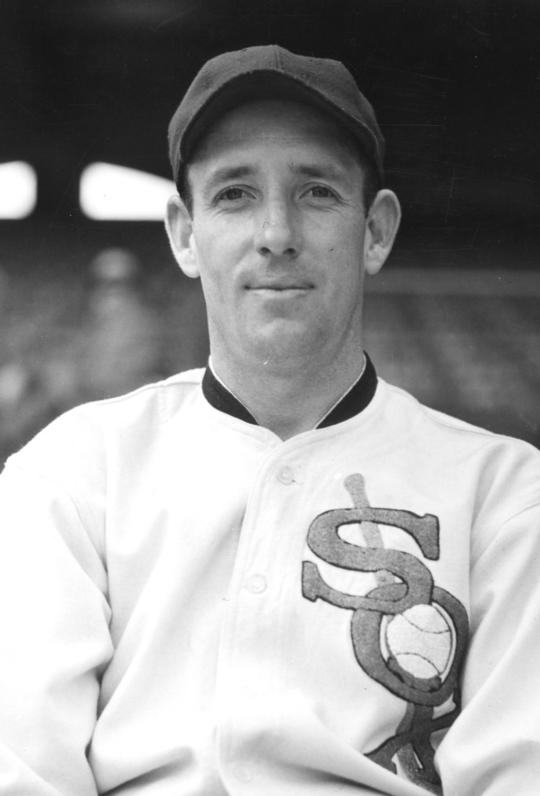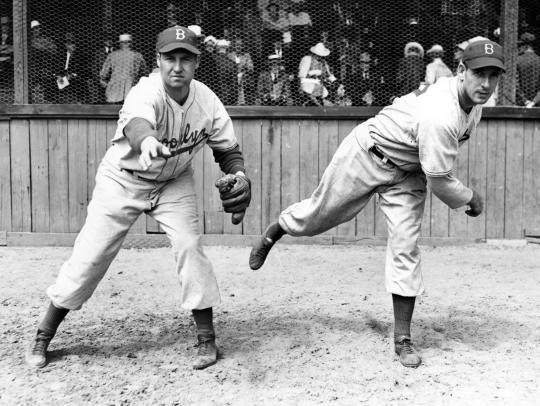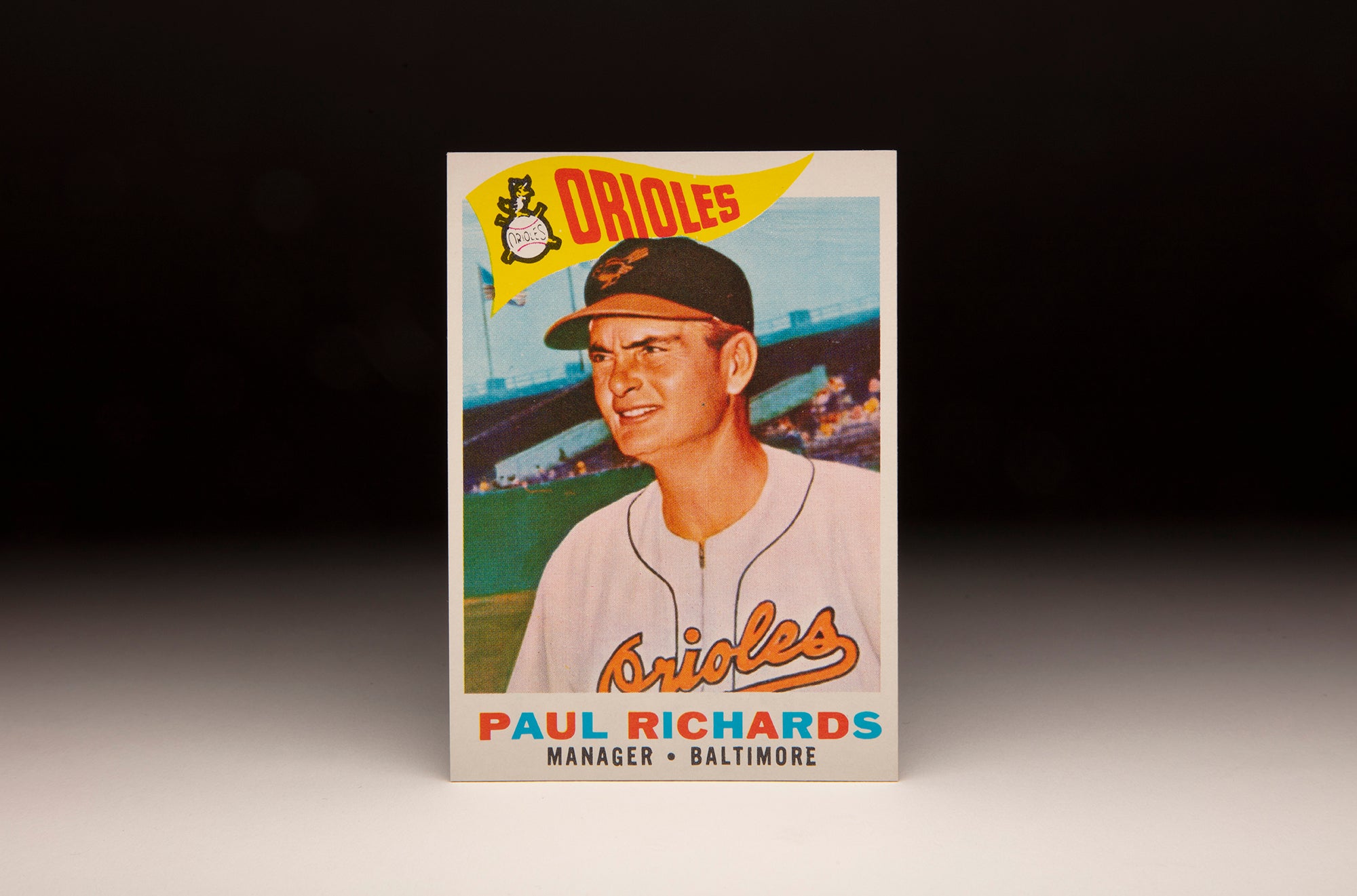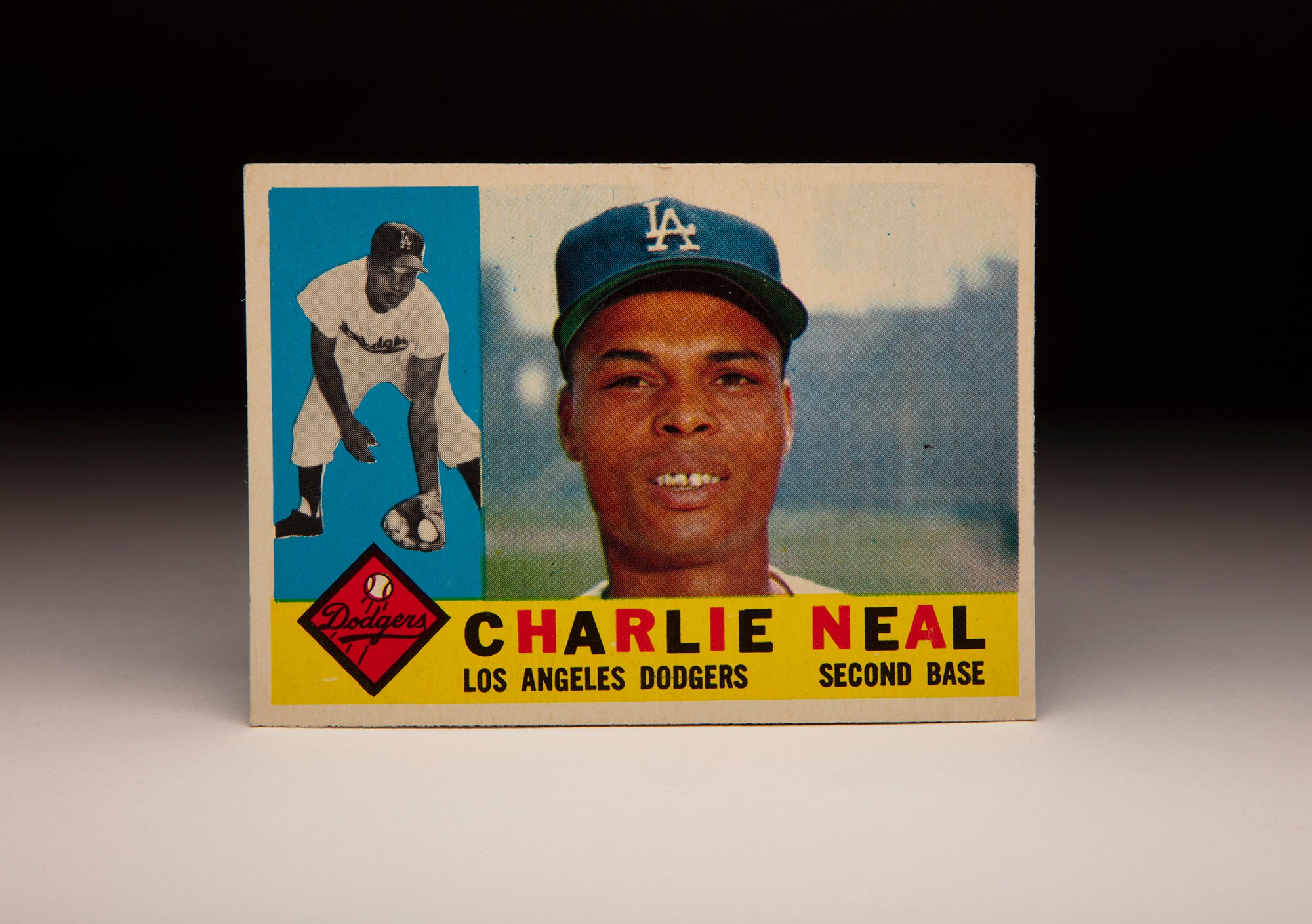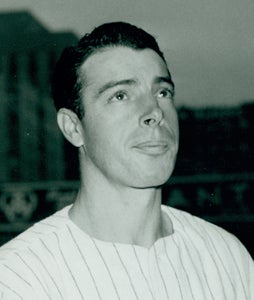- Home
- Our Stories
- #CardCorner: 1960 Topps Whitlow Wyatt
#CardCorner: 1960 Topps Whitlow Wyatt
The 1941 World Series will always be remembered for Mickey Owen’s dropped third strike in Game 4, a play that allowed the Yankees to rally past the Dodgers when Brooklyn was on the verge of tying the series at two games apiece.
But one day later, an even more unusual event played out on the Ebbets Field infield. For the first and possibly only time anyone could remember, Joe DiMaggio appeared ready to fight.
Hall of Fame Membership
There is no simpler, and more essential, way to demonstrate your support than to sign on as a Museum Member.
And Whitlow Wyatt was apparently the cause.
A four-time All-Star pitcher who persevered through early career arm trouble, Wyatt anchored the Brooklyn Dodgers pitching staff in the early 1940s. More than a decade after his career ended, Wyatt had a second big league act – this time as one of the most respected pitching coaches in the game.
Born John Whitlow Wyatt on Sept. 27, 1907, in Kensington, Ga., Wyatt graduated from high school in 1927 and enrolled at Georgia Tech that year. But the Tigers spotted him playing semipro ball and convinced him to leave Georgia Tech – where he was slated to play football – and concentrate on the diamond.
Wyatt made his big league debut for the Tigers on Sept. 16, 1929, after posting a 22-6 mark that year with Class B Evansville. He spent the entire 1930 season in Detroit, going 4-5 as a spot starter/reliever with a respectable 3.57 ERA during a season when the league mark was 4.65.
But in the spring of 1931, Wyatt reported to camp with a dead arm. A proponent of natural healing, Wyatt asked to work out his troubles in a hot-weather outpost in the minors. The Tigers sent him to Class A Beaumont of the Texas League, where he was 11-3 with a 1.51 ERA. Wyatt pitched in four games for Detroit that year, then returned to the Tigers for the entire 1932 season, where he was 9-13 with a 5.03 ERA over 205.2 innings.
From there, Wyatt spent a nomadic five years in the majors, never winning more than four games in any season. He was traded to the White Sox in 1933, underwent arm surgery in 1934, posted a 6.75 ERA in 30 games in 1935, worked a total of three innings in 1936 (spending most of the season with Kansas City of the American Association) and was a mop-up reliever for the Indians in 1937.
By 1938, Wyatt was married and had purchased a 700-acre farm in Haralson County, Georgia. But he decided to give baseball one last chance, agreeing to pitch for the Indians’ farm American Association farm team in Milwaukee. Wyatt went 23-7 with a 2.37 ERA for the Brewers, but the Indians sold his contract midway through the season to Brooklyn.
It would be one of the Dodgers’ best deals of the decade.
With Milwaukee, Wyatt perfected a curveball that he could throw for strikes at any time. Working “backwards” in an era where most hitters looked for fastballs when ahead in the count, Wyatt became a big league star in his 30s.
“I was strictly a fireballer in the American League and got nowhere,” Wyatt told the Philadelphia Inquirer following his career. “I never would have gotten anywhere, except maybe in the low minors, if I hadn’t picked up a slow curve.”
Wyatt made the Dodgers’ big league roster in 1939 and went 8-3 with a 2.31 ERA in 109 innings in a season that was truncated by a knee injury. In 1940, Wyatt was 15-14 with a 3.46 ERA and an NL-best five shutouts in 239.1 innings.
Then in 1941, Wyatt led the Dodgers to their first pennant in 21 years by going 22-10 with a 2.34 ERA, a league-best 1.058 WHIP and seven shutouts. He started Game 2 of the World Series and pitched a complete game, allowing nine hits and two runs in Brooklyn’s 3-2 victory.
After Owen’s miscue in Game 4 put the Yankees ahead 3-games-to-1, the season was riding on Wyatt’s performance in Game 5. The Yankees took a 2-0 lead in the second inning on a wild pitch and a Joe Gordon single, but the Dodgers cut the deficit to 2-1 in the third when Wyatt doubled and scored on a sacrifice fly by Pete Reiser. Then in the fourth, Wyatt took exception to a ball-four call – by future Hall of Famer Bill McGowan – on Gordon, tossing his glove in the air and kicking a hole in the mound.
The Yankees took a 3-1 lead in the fifth on a homer by Tommy Heinrich. DiMaggio was the next batter, and he flew out to center field for the second out of the inning after taking some tight pitches. As he was returning to the dugout, DiMaggio turned back toward the mound – and Wyatt shouted something in DiMaggio’s direction. Quickly, players from both sides charged the mound as the umpires worked to restore order.
Wyatt never would reveal what words were exchanged. Neither did the Yankee Clipper, who would only say that Wyatt was “the meanest guy I ever saw.”
Wyatt finished third in the NL MVP vote after the season, with Dodgers’ teammates Dolph Camillli and Pete Reiser taking the top two spots. Wyatt was 19-7 with a 2.73 ERA in 1942 as the Dodgers won 104 games but fell two games short of the Cardinals in the race for the pennant.
Wyatt went 14-5 with a NL-leading .737 winning percentage in 1943, but arm problems caught up with him in 1944 when he was 2-6 with a 7.17 ERA. His contract was sold to the Phillies near the end of Spring Training in 1945, and he went 0-7 in 10 starts for the Phillies before drawing his release on Feb. 9, 1946.
Wyatt returned to his farm for the next four years, but former Dodgers teammate Dixie Walker brought Wyatt back to baseball in 1950 when he hired him to be his pitching coach with the Atlanta Crackers of the Southern Association. Among the pitchers on that team was Hugh Casey, who starred for the Dodgers in 1941 along with Wyatt and Walker.
Wyatt, meanwhile, got back in the action briefly that year when he started the Southern League All-Star Game.
After four seasons, Wyatt took over as the Crackers’ manager in 1954, leading Atlanta to the Southern Association title and a win in the Dixie World Series against Texas League champion Houston.
Fresh off that success, Wyatt joined the Philadelphia Phillies staff as the team’s pitching coach in 1955.
When his contract expired three years later, Milwaukee manager Fred Haney hired Wyatt as his pitching coach. The Braves were the defending World Series champions, and Wyatt steered a staff led by Warren Spahn and Lew Burdette back to the World Series, where they lost in seven games to the Yankees.
“He’s the best pitching coach I’ve ever seen,” Bob Rush, who won 10 games for the Braves in 1958, told the Associated Press.
By this time, Wyatt had reinvented himself as a southern gentleman, able to build up the confidence of his pupils and demonstrate the value of the slow curve. Wyatt remained the Braves’ pitching coach as the Braves went from Haney to Chuck Dressen to Birdie Tebbetts to Bobby Bragan to Billy Hitchcock to Ken Silvestri in the dugout. But when general manager Paul Richards – who took over the Braves in 1967 – hired Lum Harris as manager for the 1968 season, Wyatt was not invited back.
He soon retired to his farm, where he lived until passing away at age 91 on July 16, 1999.
Wyatt finished his pitching career with a record of 106-95 with a 3.79 ERA, winning 80 of those games with Brooklyn.
But whether it was on the mound during 10 of 16 big league seasons where he won four or fewer games – or in the clubhouse where he survived multiple managerial changes – Whitlow Wyatt had mastered the art of perseverance.
Craig Muder is the director of communications for the National Baseball Hall of Fame and Museum



